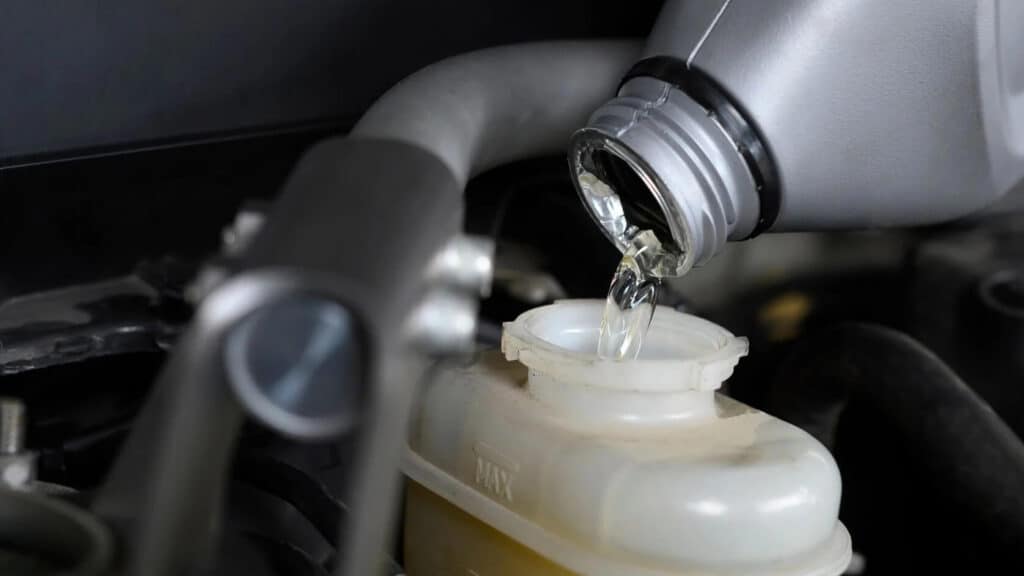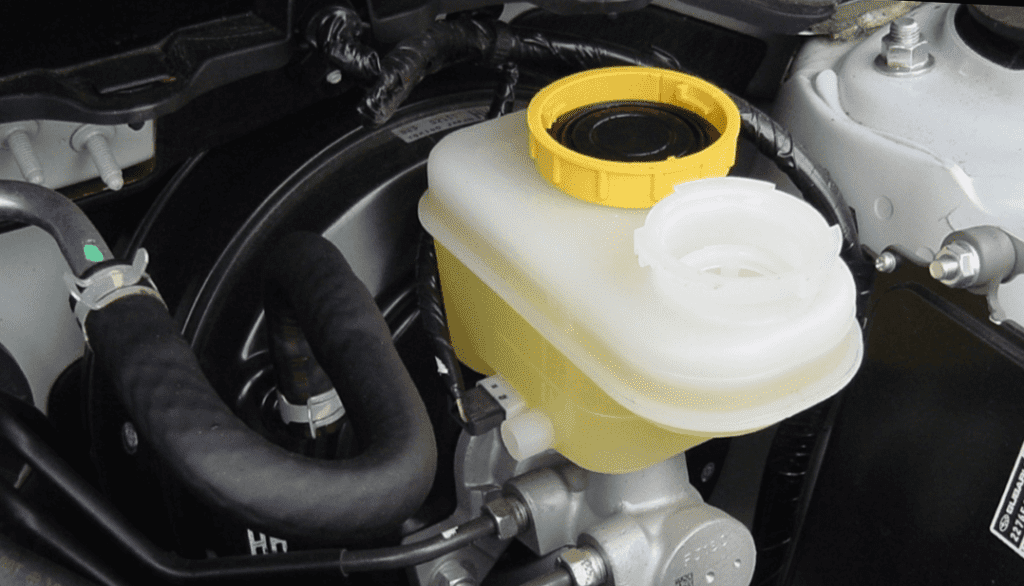The Vital Role of Brake Fluid in Your Vehicle’s Safety
Brake fluid is an essential component of your vehicle’s braking system. It plays a crucial role in ensuring that your brakes work effectively and safely, helping you maintain control on the road. However, like all other fluids in your vehicle, brake fluid can deteriorate over time and require replacement. This article will explore the importance of brake fluid, identify four warning signs that it’s time for a change, and provide guidance on how to maintain optimal brake fluid levels for a safe drive.
The Function of Brake Fluid: How It Impacts Your Braking System
Brake fluid is a hydraulic fluid that transmits the force applied by the brake pedal to the brake calipers, which in turn clamp the brake pads onto the brake rotors to slow down or stop your vehicle. The fluid must maintain a constant viscosity and resist high temperatures to work effectively. Over time, brake fluid can become contaminated with water, air, or debris, leading to a decline in performance and potentially compromising your vehicle’s braking capabilities.

Sign #1: Discolored or Dark Brake Fluid
One of the first signs that your brake fluid needs changing is discoloration. Fresh brake fluid is typically clear or amber-colored. Over time, it can become dark or cloudy due to contamination or heat exposure. If your brake fluid appears discolored, it’s likely time for a change.
Sign #2: A Soft or Spongy Brake Pedal
A soft or spongy brake pedal is another indication that your brake fluid may be compromised. This can result from air or moisture in the fluid, which reduces its effectiveness and can lead to a decline in braking performance. If you notice a change in the feel of your brake pedal, have your brake fluid inspected and replaced if necessary.
Sign #3: Decreased Braking Performance or Longer Stopping Distances
If you experience decreased braking performance or longer stopping distances, your brake fluid could be to blame. Contaminated or old brake fluid can hinder the proper functioning of your braking system, making it less effective in slowing or stopping your vehicle. If you notice a decline in braking performance, have your brake fluid checked and replaced as needed.
Sign #4: Brake Warning Lights on Your Dashboard
Your vehicle’s dashboard warning lights can alert you to potential brake fluid issues. If the brake warning light or ABS (Anti-Lock Braking System) light illuminates, it could indicate a problem with your brake fluid, such as low levels or contamination. In this case, it’s essential to have your brake fluid inspected and addressed as soon as possible.
How to Inspect and Test Your Brake Fluid: A Step-by-Step Guide
To inspect and test your brake fluid, follow these steps:
1. Locate the brake fluid reservoir, typically found near the master cylinder in the engine compartment.
2. Check the fluid level and color. If the level is low or the color is dark or cloudy, it may be time for a change.
3. To test the fluid, you can use a brake fluid tester, available at most auto parts stores. These devices measure the moisture content in the fluid, which can affect its performance.
Changing Your Brake Fluid: When and How to Do It
Consult your vehicle’s owner’s manual for the recommended brake fluid change intervals, which can vary depending on the make and model. Generally, it’s a good idea to change your brake fluid every two years or 30,000 kilometers, whichever comes first.
Maintaining Optimal Brake Fluid Levels: Tips for Ensuring a Safe Drive
To maintain optimal brake fluid levels and ensure a safe drive, follow these tips:
1. Regularly inspect your brake fluid for discoloration and proper levels.
2. Check for any leaks in the braking system, including hoses, lines, and seals, and address them promptly.
3. Follow the manufacturer’s recommended brake fluid change intervals, typically every two years or 30,000 kilometers.
4. Use only the type of brake fluid specified in your vehicle’s owner’s manual to avoid compatibility issues.
5. If you’re unsure about the condition of your brake fluid, have it inspected by a professional technician to ensure your braking system is functioning optimally.

Conclusion: Heed the Warning Signs and Keep Your Braking System in Top Shape
Regularly monitoring and maintaining your brake fluid is an essential aspect of vehicle safety. By paying attention to the warning signs and taking action when necessary, you can help ensure that your braking system remains in top shape and provides reliable stopping power when you need it most. Stay proactive with your brake fluid maintenance to enjoy a safer and smoother driving experience.
Uchanics is your ultimate car repair and maintenance solution, tailored to provide unparalleled convenience. Here’s why Uchanics should be your top choice for brake service:
• Experience brake pad replacements and brake servicing right at your doorstep
• Effortless online booking for your convenience
• Transparent, competitive pricing
• Skilled mobile technicians at your service
• Utilizing top-notch equipment and superior replacement parts
• Capability to complete 90% of repairs on-site, eliminating the need for a trip to the auto repair shop
• A reassuring 12-month, 20,000 km warranty for peace of mind
To receive a precise estimate for the cost of replacing your brake pads, simply request a Free quote by clicking here.
